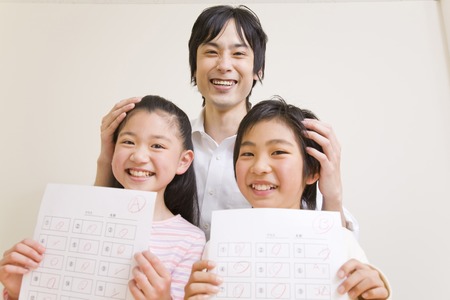Sure-Win Ways To Help Your Child Set Goals
Submitted by KiasuEditor
When it comes to setting academic goals for children, many parents tend to think in terms of a target score to attain, such as 85 and above for every subject, with a reward system in place should targets be met. But children may not have a clear picture of what they must do to reach their goals; if they do obtain the desired results, it is often by blindly following directions given by parents and teachers, with little sense of purpose.
This could change if parents realise that goals on their own have motivational value, when supported by a specific and realistic plan. Walking your children through the process of goal setting will benefit them later in life as well, not just in academics, but in anything they hope to achieve or improve.
Read the following steps to help your children—and even yourself—set better goals right away.

Gauge where your kids are at.
“Goal setting works really well if you have some sort of pre-assessment for students to review and then set a goal,” says education blogger Jessica Boschen, who has taught mainly in rural and suburban low-income schools in the US. “Without data, students don’t know where to start.”
One way to conduct a pre-assessment is to use past-year exam papers or topical quizzes. Alternatively, refer to your child’s test and examination scores in previous semesters as a guide—however, note that these may not be entirely relevant in terms of the topics covered or the levels of difficulty. A rule of thumb, says Boschen, is to aim for a 10% increase in the skill you’re working on, bearing in mind that goals will need to be adjusted based on the abilities of the individual child.
Discuss and define goals together.
There are many different goal-setting models you can try, to see what works best for your child. A common model is SMART, which is short for Specific, Measurable, Achievable, Relevant (or “Reward,” if you prefer an incentive-based approach), and Time-bound. This model compels the goal-setter to mull over these questions:
- What exactly is your goal?
- How will you know if you have met your goal?
- What steps will you take to achieve your goal?
- Why is your goal important to you?
- When do you want to achieve your goal?
A pared-down, child-friendly version of SMART can be found in this “superhero” form, which simply requires one to list a goal, along with four steps to get to the goal.
Another fun approach is known as “stars and wishes,” where “stars” refer to the things that kids have already mastered or are good at, while “wishes” refer to areas that need to be worked on.
Kids can also structure goals according to a timeline; for instance, they can define a goal for the end of the year, such as attaining a certain score to make it into a better class, and proceed to list the monthly, weekly, and daily actions or targets that will serve as stepping stones towards the goal.
Put goals and plans down on paper.
In 2015, there was media coverage about a two-year University of Toronto study involving 700 students, who participated in a writing exercise to recall significant life memories and use them to chart a path towards achieving future goals. Psychology professor Jordan Peterson ran the study, calling the process “self-authoring,” and he discovered that after two years, the achievement gap between minority students and white students had narrowed.
An earlier study, conducted by psychology professor Gail Matthews from Dominican University, found that committing to goals, writing them down, and informing a third party about one’s goals and action plans resulted in a 62% chance that participants would either accomplish their goals, or be at least halfway there. Sending a weekly progress report to a third party increased this likelihood to 76%.
Ensure kids understand the success criteria.
Students need to know what success “looks like” before they can begin to “envision the steps they need to get there,” says Mercedes Hutchens, a teacher who believes that everyone can succeed “with a clear goal and a little help.”
If there are scoring rubrics provided by the school, look at them with your child to analyse why your child received a particular grade, and what the areas for improvement are. In composition writing for example, it could be that your child needs to use more advanced words, or observe the classic “show, don’t tell” rule of writing, and specific ways to do this include using dialogue and sensory language.
For other subjects, it may help kids to look at a model answer, or practise topical questions until they have mastered a concept—if your child is working on assessment books, you can discuss and agree on a target score to be achieved for each exercise, before your child can move on to the next topic. The important thing is that your child is aware of what it takes to be successful, and Hutchens says this knowledge is so powerful that it can transform learning attitudes.
Teach kids to assess their own learning progress.
According to Susan Brookhart, a coordinator for assessment and evaluation at the Duquesne University in Pennsylvania, self-assessment is about taking responsibility for the learning process by asking oneself these questions:
- Where am I now?
- Where am I going?
- Where to next?
“Students aren’t just empty heads to fill,” says Brookhart. “They need to be aiming to learn something, not just aiming to comply with teachers’ directions. Learning is much deeper if the student is thinking, ‘I am doing this because it will help me learn this.'”